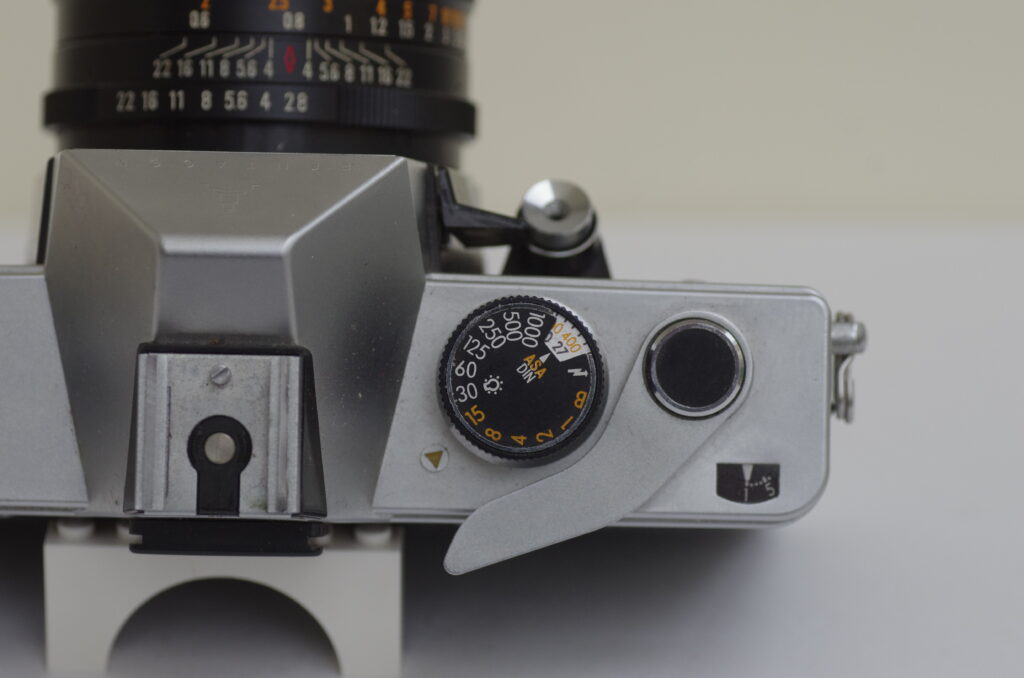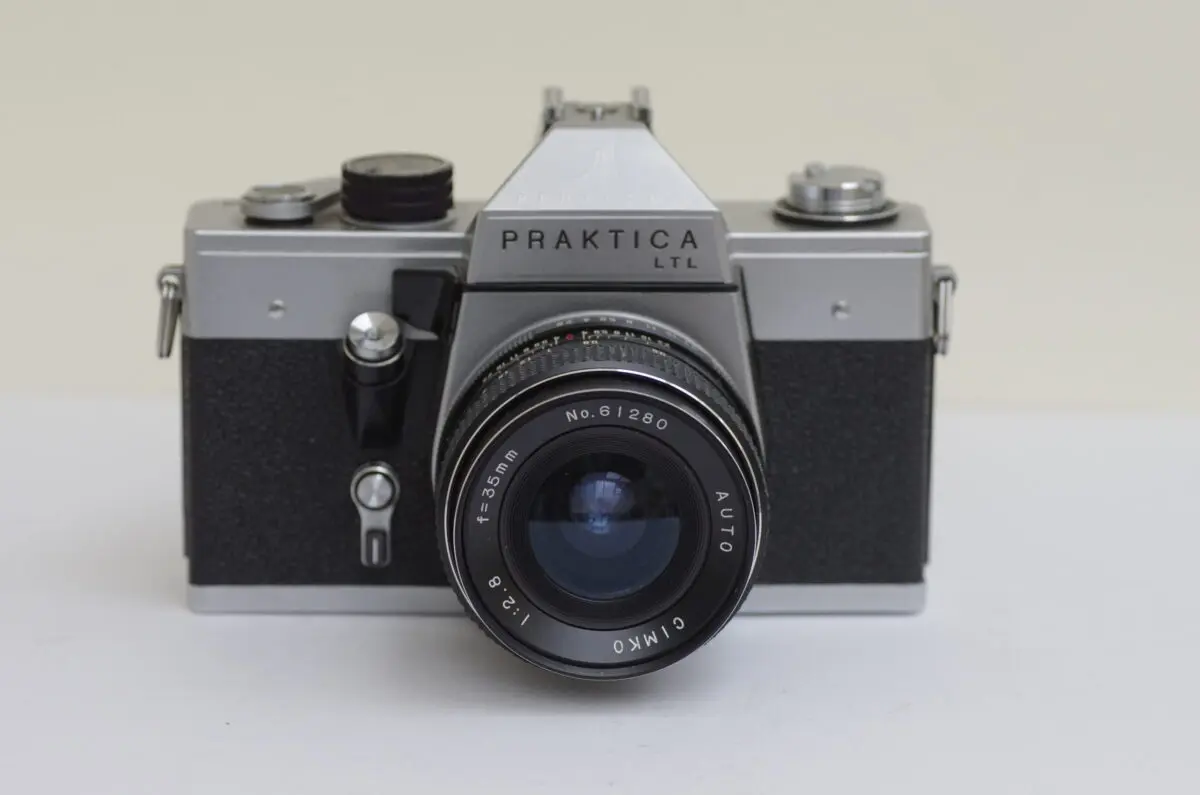Praktica LTL 35 mm vintage SLR camera.
This is a review of a Praktica LTL 35 mm single lens reflex camera which was made by Pentacon in East Germany sometime between 1970 and 1975.
Praktica LTL Images








My Praktica LTL Camera
This camera was donated to my camera collection by my brother Paul, who has owned the camera since new. The camera has seen a lot of action in the past, having accompanied him all around the world when he was an officer in the Merchant Navy, but has spent the last 10 years or so in a box in the loft. Even so, it’s in a very clean condition, and appears to work in every aspect, although I can’t confirm the metering at the moment because I don’t have a suitable battery.
Praktica LTL description
The LTL is a fully manual 35 mm SLR, which used a battery only for its exposure measuring circuit. In construction, the camera is uninspiring and rather box like, but has a reputation for reliability and toughness. The fact that this example is still working perfectly after about 45 years is testament to that.
I have a copy of a 1981 ‘What Camera Weekly’ magazine which, although it doesn’t have the LTL listed, it does have the replacement LTL3 model and that is listed at £49 and I would guess that the LTL was a similar price. A comparison to other models and prices in the magazine would suggest the LTL was a low to mid-range camera.
Interestingly, an Internet price inflation calculator suggests £49 in 1981 would be £188 in 2016, so not exactly cheap. If you wanted to buy one today, a quick search of sold listings on eBay shows you would pay between £10 and £30 for a unit with lens and case.
It’s a fully mechanical camera, with a match needle metering circuit employing stop down metering. The lever for carrying out a meter reading and setting the exposure is conveniently placed above the shutter release and can be operated with the same finger, which makes the camera really easy to use. I found that I could compose, set the exposure and focus without taking the camera from my eye. There is also a helpful indicator in the viewfinder if the frame isn’t advanced. As well as being used for metering, the stop down lever also provided for depth of field preview, of course.
The lens mount is the widely used M42 screw thread mount, originally used by Pentax, which means the camera can be used with a vast array of lenses from a huge variety of manufacturers. There were also some pretty nice lenses made by Pentacon themselves, including the Flektogon and Carl Zeiss Jena series. The lens fitted to the camera in the pictures above is a typical 3rd party add on lens made by Cimko, which I will review in a future post.
The camera body has a lever to automatically stop down the lens, so as long as the lens had the auto diaphragm pin in the mount, it could be focused at full brightness and would be closed only when the shutter is fired. For manual lenses, of course it would be important to focus prior to setting the exposure.
There is a hot-shoe fitted above the prism, and the shutter speed for flash sync has its own setting on the speed dial.
In many ways the spec of this camera is very similar and in some way exceeds the last camera I added to my collection, the Pentax Spotmatic, but (IMHO) this camera has nowhere near the class of the Spotmatic.
Praktica LTL Manual
Below is a copy of the printed manual that was supplied with the camera from new.
Praktica LTL specifications
- Praktica LTL 35mm SLR.
- Shutter speed 1sec to 1/1000 + B.
- Selectable flash sync speed of 1/125.
- ASA 12 to 1600 meter film speed range.
- Auto frame counter with zero on opening the film chamber.
- Metal, vertical travel, focal plane shutter.
- Hot shoe flash sync.
- Front, angled shutter release threaded for cable release.
- Stop down, match needle metering & depth of field preview lever.
- Warning in the viewfinder when frame not advanced.
- Fresnel screen, micro-prism centre and ground glass outer circle to aid focusing.
- Auto aperture with suitable lens.
- Self-timer with its own release button.
- Solid, reliable construction.
- M42 lens mount.
- Manual from the camera manuals site is here
Discover more from Everything Vintage
Subscribe to get the latest posts sent to your email.






